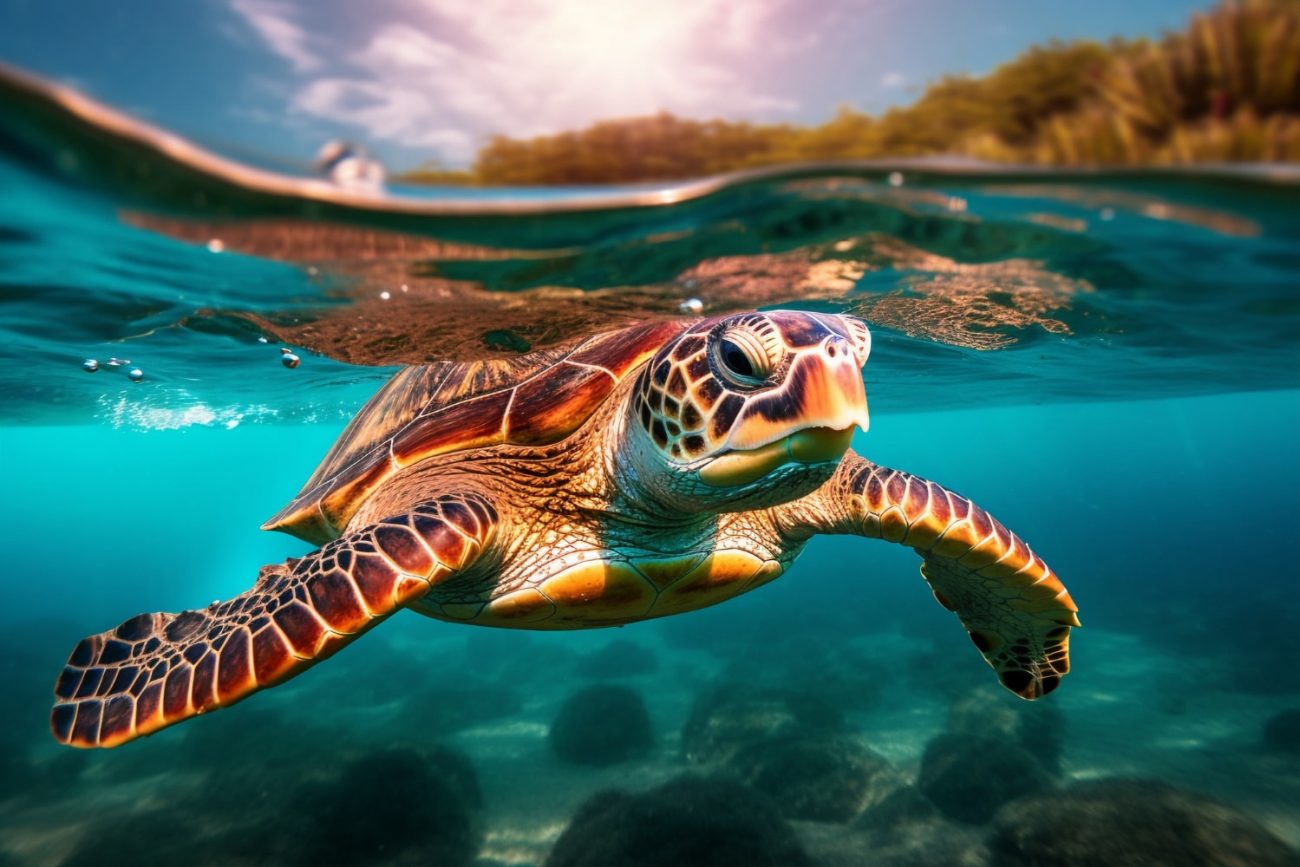Turtles are one of the oldest and most fascinating reptiles on our planet. Their history goes back more than 200 million years, and they have gone through numerous evolutionary changes to adapt to different living conditions. They live in different environments – from oceans to deserts – and have unique physical characteristics and behavioral traits. We offer you a selection of interesting facts about turtles that will reveal a lot of interesting things about these amazing creatures.
- Turtles are among the oldest reptiles that appeared on Earth in the Triassic period, approximately 200 million years ago. They have survived dinosaurs and numerous evolutionary changes, remaining virtually unchanged. This makes them living witnesses to the history of our planet.
- Turtles are known for their longevity. Some species can live for over 100 years, and giant tortoises from the Galapagos Islands can reach the age of 150-200 years. Their longevity is due to their slow metabolism and the protective function of their shell.
- The tortoise shell consists of two parts – the carapace (upper part) and the plastron (lower part). These parts are connected by lateral shields and consist of bone plates covered with horny shields. The shell is not only a defense but also an important part of the turtle’s skeleton.
- Turtles do not have teeth. Instead, their jaws are covered with horny plates that form sharp edges that allow them to bite and chew their food. This adaptation helps them process a variety of foods, from plants to small animals.
- Sea turtles can travel long distances during their migrations. For example, the green sea turtle (Chelonia mydas) can travel up to 2,600 kilometers from feeding grounds to breeding grounds. They navigate using the Earth’s magnetic field and other natural landmarks.
- Sea turtles have the ability to dive to great depths. The leatherback sea turtle (Dermochelys coriacea) can dive to a depth of 1,200 meters, which is a record among all reptiles. This ability allows them to search for food at great depths.
- Turtles lay their eggs on land, even though they spend most of their lives in the water. Female sea turtles come ashore to lay their eggs in sandy nests. After that, they return to the ocean, and the hatchlings hatch on their own and have to get to the water themselves.
- Baby turtles have many natural enemies. From the moment of hatching until they reach adulthood, they face numerous dangers – from birds and crabs to large predators in the water. Because of this, only a small part of the hatchlings survive and reach adulthood.
- Giant tortoises from the Galapagos Islands are the largest land turtles. They can weigh up to 400 kilograms and have a shell length of more than 1.2 meters. They are endemic to the Galapagos Islands and have unique adaptations for living in this environment.
- Turtles are long-lived animals. There are cases when turtles have lived for more than 200 years. For example, a giant tortoise named Jonathan, who lives on the island of St. Helena, was born around 1832 and is considered the oldest known tortoise in the world.
- Turtles have a unique ability to regenerate. If a turtle loses part of its shell, it can regenerate over time. This adaptation helps them survive in harsh environments and protect themselves from predators.
- Some turtles can hold their breath for a long time. For example, sea turtles can stay underwater without air for up to five hours, reducing their activity and slowing their metabolism. This helps them survive in the water while searching for food.
- Turtles can change the color of their skin. This is especially noticeable in land turtles, which use color change to regulate their body temperature and camouflage themselves from predators. This ability helps them survive in different environments.
- Turtles have good memory and learning abilities. They can memorize routes and feeding places, as well as recognize people who care for them. This makes them more adaptable to living conditions and interaction with other creatures.
- There are more than 300 species of turtles known to live in different parts of the world. They live in tropical forests, deserts, freshwater bodies, and oceans. Each species has its own unique adaptations that help it survive in a particular environment.
- Some species of turtles are omnivores, while others specialize in a particular diet. For example, sea turtles eat jellyfish, seaweed, and small invertebrates. Land turtles can eat grass, fruits, berries, and even small insects.
- Turtles have different methods of defense against predators. Some species can pull their heads and limbs into their shells to protect themselves from attack. Other species use their powerful jaws to defend themselves.
- Habitat loss is one of the biggest threats to turtles. Deforestation, water pollution, and climate change are all having a negative impact on their numbers. Many turtle species are endangered and in need of protection.
- Turtles play an important role in ecosystems. They help control the populations of various plant and animal species, and they help spread seeds. This makes them important contributors to biodiversity.
- Turtles have a symbolic meaning in many cultures. In ancient Greek mythology, the turtle symbolized wisdom and longevity. In some Asian cultures, the turtle is considered a symbol of harmony and protection.
Turtles are unique creatures that have a rich history and importance in nature. Their ability to adapt and survive makes them true masters of evolution. Studying turtles allows us to better understand the mechanisms of nature and the value of our planet’s biodiversity.

